
This summer I am taking an on-line course on word-finding with Dr. Diane German, and I must say, in addition to all the valuable information I have learned so far, this course has given me a brand new outlook on how to judge the language comprehension abilities of my clients with word finding difficulties. It all started with a simple task, to determine the language comprehension abilities of my client with word finding deficits. Based on available evidence I’ve collected over the period of time I’ve been working with him, I had determined that his comprehension was moderately impaired. I was then asked by Dr. German what language tasks I had used to make that determination? She also pointed out that many of the formal language comprehension tasks I’ve listed in my report required an oral response.
That question really got me thinking. The truth of the matter is that many formal tests and informal assessments that probe language comprehension abilities rely on learners oral responses. But as it had been pointed out to me, what of our clients with impaired oral skills or significant word retrieval deficits? Most of the time we judge their language comprehension based on the quality of the oral responses they produce, and if their answers are not to our satisfaction, we make sweeping judgments regarding their comprehension abilities, which as Dr. German rightfully pointed out “is the kiss of death” for learners with word finding difficulties and could potentially result in “a spiral of failure”.
Now, in the case of this particular client in question, his language comprehension abilities were truly moderately impaired. I knew that because I tested him by showing him pictures of situations and asked him questions, which did not rely on oral responses but on him selecting the correct answer from a series of pictures and written sentences.
However, had I not performed the above tasks and simply relied on the “language comprehension” subtests from popular standardized tests alone, I would not have had a defensible answer and would have had to admit that I had no clue whether his language comprehension was truly as impaired as I had described.
Following that discussion I decided to take a “fresh look” at the other expressively impaired clients on my caseload but first I needed to figure out which tasks truly assessed my clients’ language comprehension abilities. I didn’t just want to assess their listening skills and vocabulary knowledge (some of the more “easily” assessed non-verbal skills). I wanted to know whether their memory, problem solving skills, figurative language, perspective taking abilities or knowledge of multiple meaning words were actually better than I had originally judged.
Thus, I set out to compile language comprehension materials (formal or informal), which could be used to assess various aspects of language comprehension (multiple meaning words, problem solving abilities, etc) without relying on the child’s ability to produce verbal responses. However, this task turned out to be far more difficult than I had originally anticipated. For example, when I took a closer look at one of the more popular standardized tests available to me, such as the CELF-4, I realized that there were only two subtests on the first record form 5-8 years (“Concepts and Following Directions” and “Sentence Structure”) and 3 subtests on the second form 9-21 years (“Concepts & Following Directions”, “Sentence Assembly”, and “Semantic Relationships”) that relied on the listener’s ability to point to pictures or use written visuals to answer questions. Moreover, two of the subtests on the second record form (Sentence Assembly”, and “Semantic Relationships”) still required verbal responses. All other subtests testing “listening comprehension abilities” relied purely on oral responses for correct score determination.
As I reviewed other popular tests (TOLD, CASL, OWLS, etc) I quickly realized that few of these tests’ subtests actually satisfied the above requirement. Moreover, tests that actually did considerably rely on nonverbal responses (e.g., pointing) such as the Test for Auditory Comprehension of Language-3 (TACL-3) or the Test of Language Competence- Expanded Ed (TLC-Expanded Ed), were unfortunately not accessible to me at my place of work (although I did manage briefly to borrow both tests to assess some clients).
So, I decided to adapt some of the existing tests as well as create a few of my own materials to target language comprehension abilities in various areas. Surprisingly, it wasn’t as difficult as I imagined it to be, though some tasks did require more creativity than others.
The easiest of course were the assessment of receptive vocabulary for nouns, verbs, and adjectives which was accomplished via standardized testing and story comprehension for which I created picture answers for the younger children and written multiple choice responses for the older children. Assessment of synonyms and antonyms was also doable. I again printed out the relevant pictures and then presented them students. For example, to assess synonym knowledge the student was shown a relevant picture and asked to match it with another similar meaning word: “show me another word for “trail” (requires the student to point to a picture depicting “path”) or “show me another word for “flame” (requires the student to point to a picture depicting “fire”). For recognition of antonyms, the student was presented with pictures of both synonyms and antonyms and told: “show me the opposite of child” or “show me the opposite of happy” and so on.
To assess the student’s understanding of “Multiple Meanings” I borrowed the sentences from the Language Processing Test-3 Elementary (LPT-3E), and printed out a few pictures from the internet. So instead of asking the student to explain what “Rose” means in the following sentences: “Ask Rose to call me”, or “The sun rose over the mountains”, I asked the student to select and point to a corresponding picture from a group of visually related multiple meaning items. For some children, I also increased the complexity by presenting to them pictures which required attention to details in order to answer the question correctly (e.g., differentiating between boy and girl for the first picture or between actual sunrise and sun peeking through the clouds for the second picture). Similarly, to assess their problem solving abilities I again printed out pictures to go with select verbal reasoning questions: “Point to what you would do if …”; “Point to how you would solve the following situation…?”
I do have to admit that one of the more challenging subtests to adapt was the “Recalling Sentences” task. For that I ended up creating similar sounding sentences and asked the child to select the appropriate response given visual multiple choice answers (e.g., point to which sentence did I just say? “The tractor was followed by the bus?” “The bus was followed by the tractor?” “The tractor was followed by the bicycle.”
Again, the point of this exercise was not to prove that the learners’ comprehension skills were indeed impaired but rather to assess whether their comprehension was as significantly impaired as was originally judged. Well the truth of the matter was that most of the children I’ve reassessed using the “pure” auditory comprehension tasks ended up doing much better on these tasks than on those which required verbal responses.
To illustrate, here is a recent case example. I was working with one student on strengthening his knowledge of geography related core vocabulary words (names of the continents and the major bodies of water surrounding them). This boy had profound difficulty recalling the words even with maximal phonemic cues, after multiple sessions of drill instruction. Typically after he was shown a specific continent and asked to name it he produced a semantically related response (“South America” for “North America”, “Arctic” for “Antarctica”, etc), which appeared to indicate that his “knowledge” of the words was impaired or at least highly inconsistent. However, when the verbal naming task was completely eliminated and he was asked to show the examiner specifically named continents and bodies of water on a map (e.g., “Show me Europe”; “Show me Atlantic Ocean”, etc) he was able to do so with 90% accuracy over 3 trials indicating that he did have fairly solid knowledge of where each continent was located visually on a map.
Consequently, as Dr. German has rightly pointed out, when making judgment calls regarding language comprehension abilities of complex clients with severe or at least fairly involved expressive language difficulties, it is very important that SLP’s use tasks that require non verbal responses to questions (e.g., pointing, selecting a picture out of a group, etc), in order not to underestimate these children’s “true” comprehension abilities.
References and Resources:
German, D. J. (2009, Feb. 10). Child Word Finding: Student Voices Enlighten Us. The ASHA Leader, 14 (2), 10-13.
German, D.J. (2005) Word-Finding Intervention Program, Second Edition (WFIP-2) Austin Texas: Pro.Ed
German, D.J. (2001) It’s on the Tip of My Tongue, Word Finding Strategies to Remember Names and Words You Often Forget. Word Finding Materials, Inc.
Dr. German’s Word Finding Website: http://www.wordfinding.com/
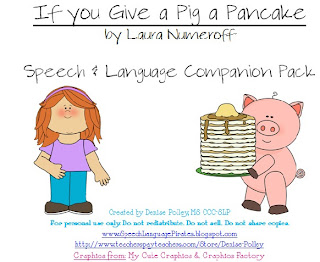 Is there anything more fun then literature based speech language intervention?
Is there anything more fun then literature based speech language intervention?
 Today I am excited to tell you about another product in my assessment referral series:
Today I am excited to tell you about another product in my assessment referral series:  Last week I did a guest post for The Simply Speech Blog. In case you missed it, below I offer an explanation why targeted speech language assessments are so important, as well as list helpful resources that will aid you in speech language assessment preparation.
Last week I did a guest post for The Simply Speech Blog. In case you missed it, below I offer an explanation why targeted speech language assessments are so important, as well as list helpful resources that will aid you in speech language assessment preparation.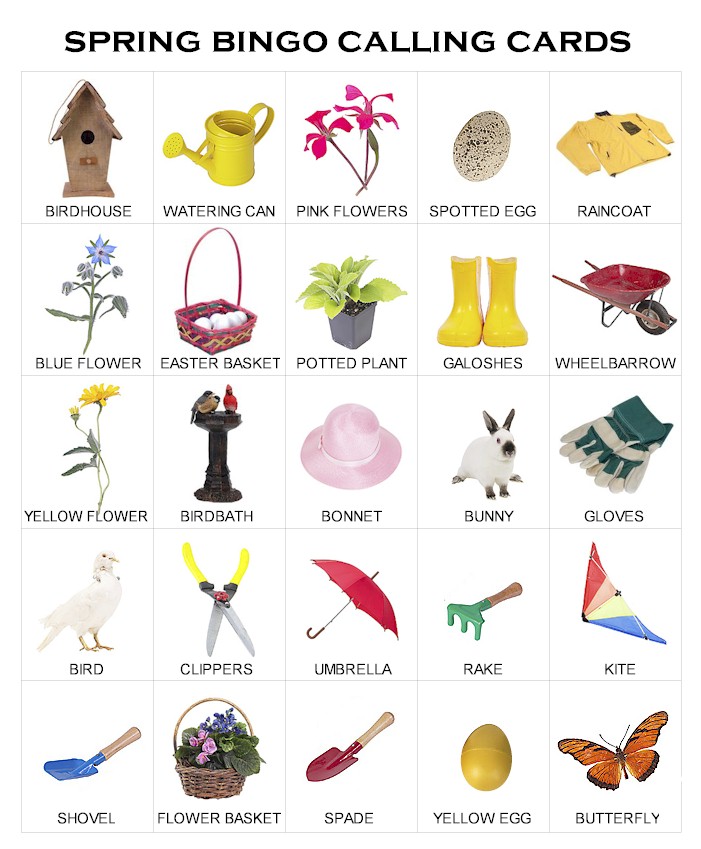 Back in late February I did a guest post for Teach Speech 365. In case you missed it I am running it again on my blog since spring is now in full bloom!
Back in late February I did a guest post for Teach Speech 365. In case you missed it I am running it again on my blog since spring is now in full bloom! Inattentiveness, hyperactivity, and impulsivity are the most common presenting behavioral problems in at-risk children. This workshop will describe select speech language causes of hyperactivity and inattentiveness in children beyond the ADHD diagnosis, including traumatic brain injury, auditory processing disorders, severe language disorders, as well as social pragmatic language deficits.It will review case examples to illustrate the importance of differential diagnosis. Implications for assessment as well as the need for relevant referrals will be discussed.
Inattentiveness, hyperactivity, and impulsivity are the most common presenting behavioral problems in at-risk children. This workshop will describe select speech language causes of hyperactivity and inattentiveness in children beyond the ADHD diagnosis, including traumatic brain injury, auditory processing disorders, severe language disorders, as well as social pragmatic language deficits.It will review case examples to illustrate the importance of differential diagnosis. Implications for assessment as well as the need for relevant referrals will be discussed.

 There are many fun language based activities parents can do at home with their newly (and not so newly) internationally adopted preschool and school aged children in the fall. One of my personal favorites is bingo. Boggles World, an online ESL teacher resource actually has a number of ready made materials, flashcards, and worksheets which can be adapted for such purposes. For example, their
There are many fun language based activities parents can do at home with their newly (and not so newly) internationally adopted preschool and school aged children in the fall. One of my personal favorites is bingo. Boggles World, an online ESL teacher resource actually has a number of ready made materials, flashcards, and worksheets which can be adapted for such purposes. For example, their 
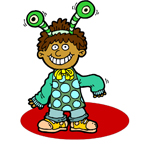








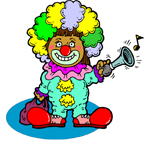
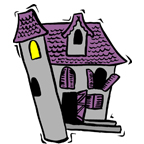




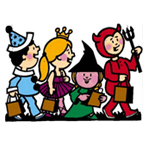

 A to Z Jr– a game of early categorizations is recommended for players 5 – 10 years of age, but can be used with older children depending on their knowledge base. The object of the game is to cover all letters on your letter board by calling out words in specific categories before the timer runs out. This game can be used to
A to Z Jr– a game of early categorizations is recommended for players 5 – 10 years of age, but can be used with older children depending on their knowledge base. The object of the game is to cover all letters on your letter board by calling out words in specific categories before the timer runs out. This game can be used to  Tribond Jr – is another great game which purpose is to determine how 3 seemingly random items are related to one another. Good for older children 7-12 years of age it’s also great for problem solving and reasoning as some of the answers are not so straight forward (e.g., what do the clock, orange and circle have in common? Psst…they are all round)
Tribond Jr – is another great game which purpose is to determine how 3 seemingly random items are related to one another. Good for older children 7-12 years of age it’s also great for problem solving and reasoning as some of the answers are not so straight forward (e.g., what do the clock, orange and circle have in common? Psst…they are all round) Blurt – a game for children 10 and up is a game that works on a simple premise. Blurt out as many answers as you can in order to guess what the word is. Blurt provides ready-made definitions that you read off to players so they could start guessing what the word is. Players and teams use squares on the board strategically to advance by competing in various definition challenges that increase language opportunities.
Blurt – a game for children 10 and up is a game that works on a simple premise. Blurt out as many answers as you can in order to guess what the word is. Blurt provides ready-made definitions that you read off to players so they could start guessing what the word is. Players and teams use squares on the board strategically to advance by competing in various definition challenges that increase language opportunities. Guess Who (age 6+),
Guess Who (age 6+),  Guess Where (age 6+), and Mystery Garden (age 4+) are great for encouraging students to ask relevant questions in order to be the first to win the game. They are also terrific for encouraging reasoning skills. Questions have to be thought through carefully in order to be the first one to win the game.
Guess Where (age 6+), and Mystery Garden (age 4+) are great for encouraging students to ask relevant questions in order to be the first to win the game. They are also terrific for encouraging reasoning skills. Questions have to be thought through carefully in order to be the first one to win the game. 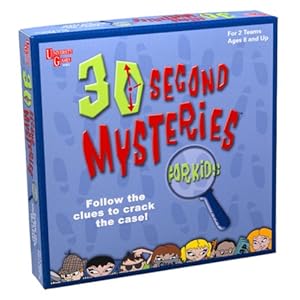 In 30 Second Mysteries kids need to use critical thinking and deductive reasoning in order to solve mysteriously sounding cases of everyday events. Each clue read aloud reveals more about the mystery and the trick is to solve it given the fewest number of clues in order to gain the most points.
In 30 Second Mysteries kids need to use critical thinking and deductive reasoning in order to solve mysteriously sounding cases of everyday events. Each clue read aloud reveals more about the mystery and the trick is to solve it given the fewest number of clues in order to gain the most points.